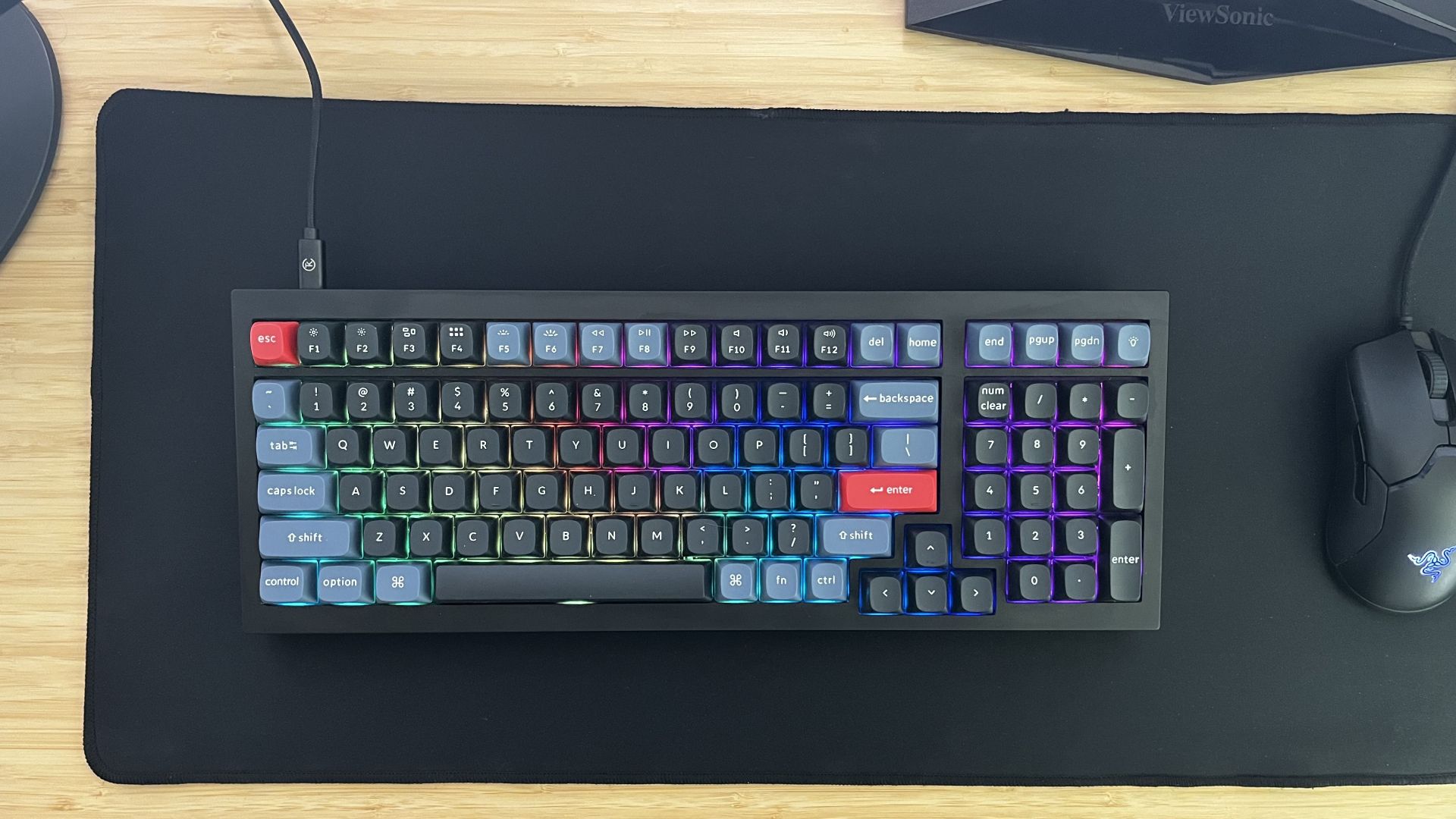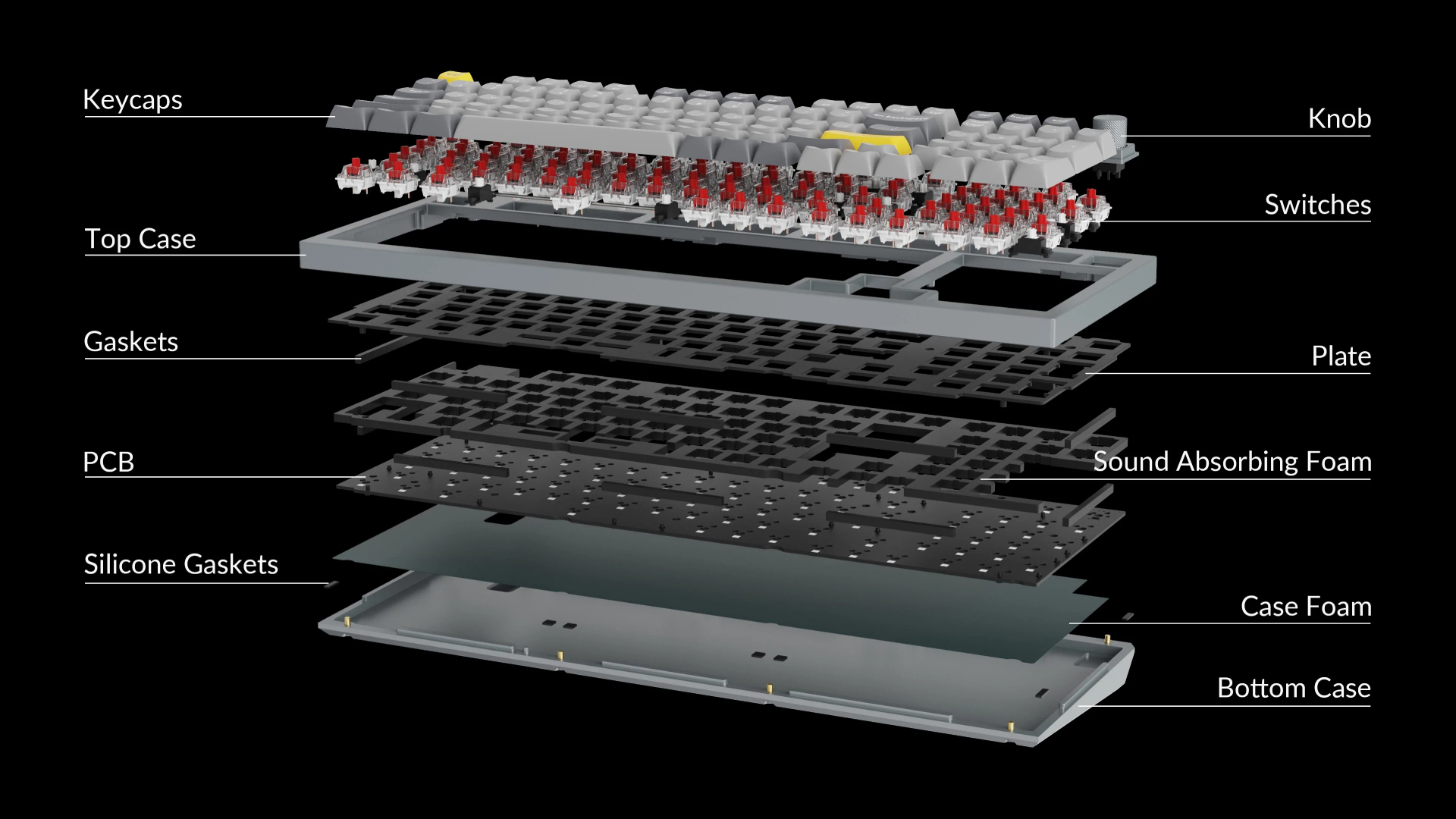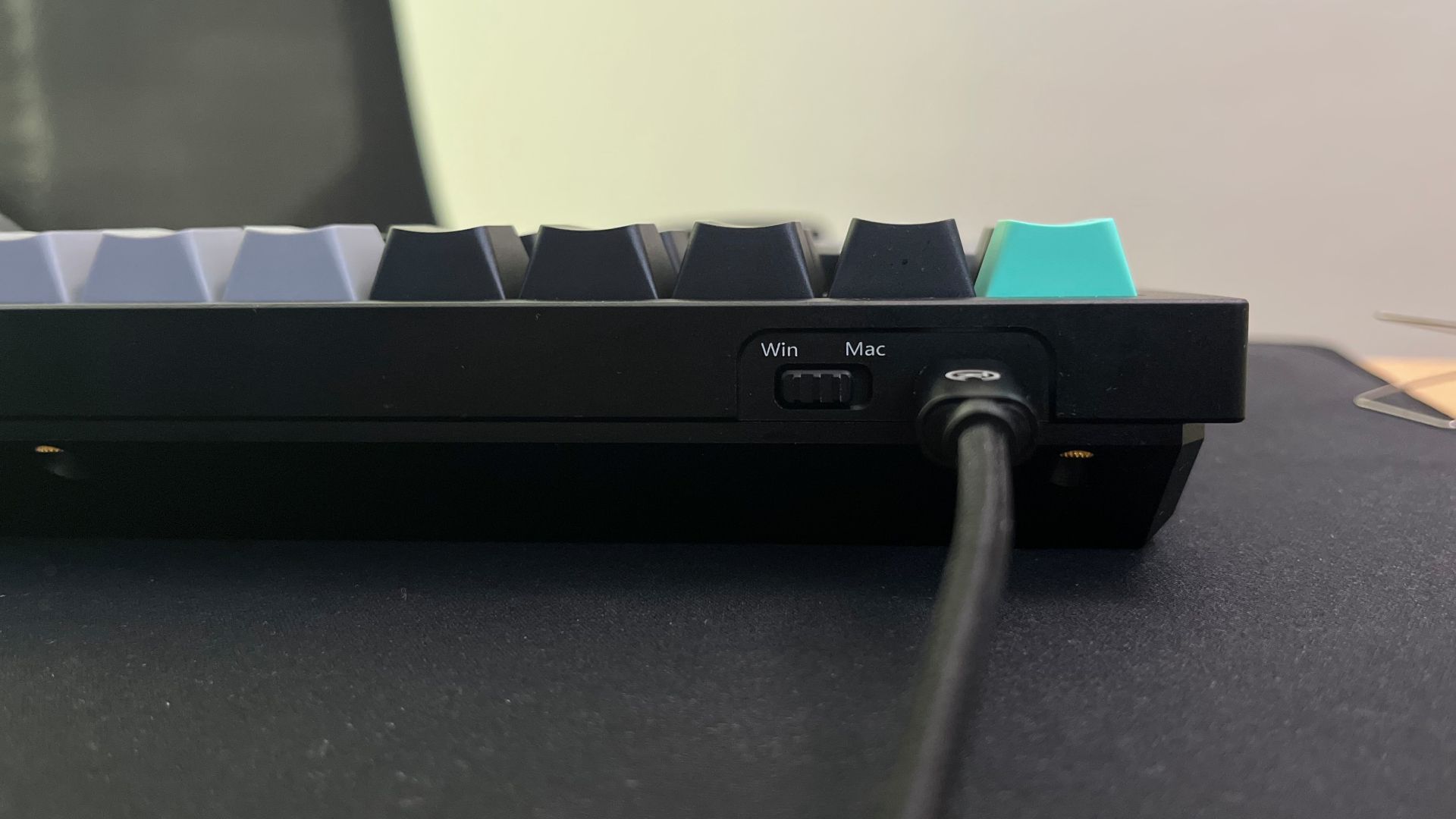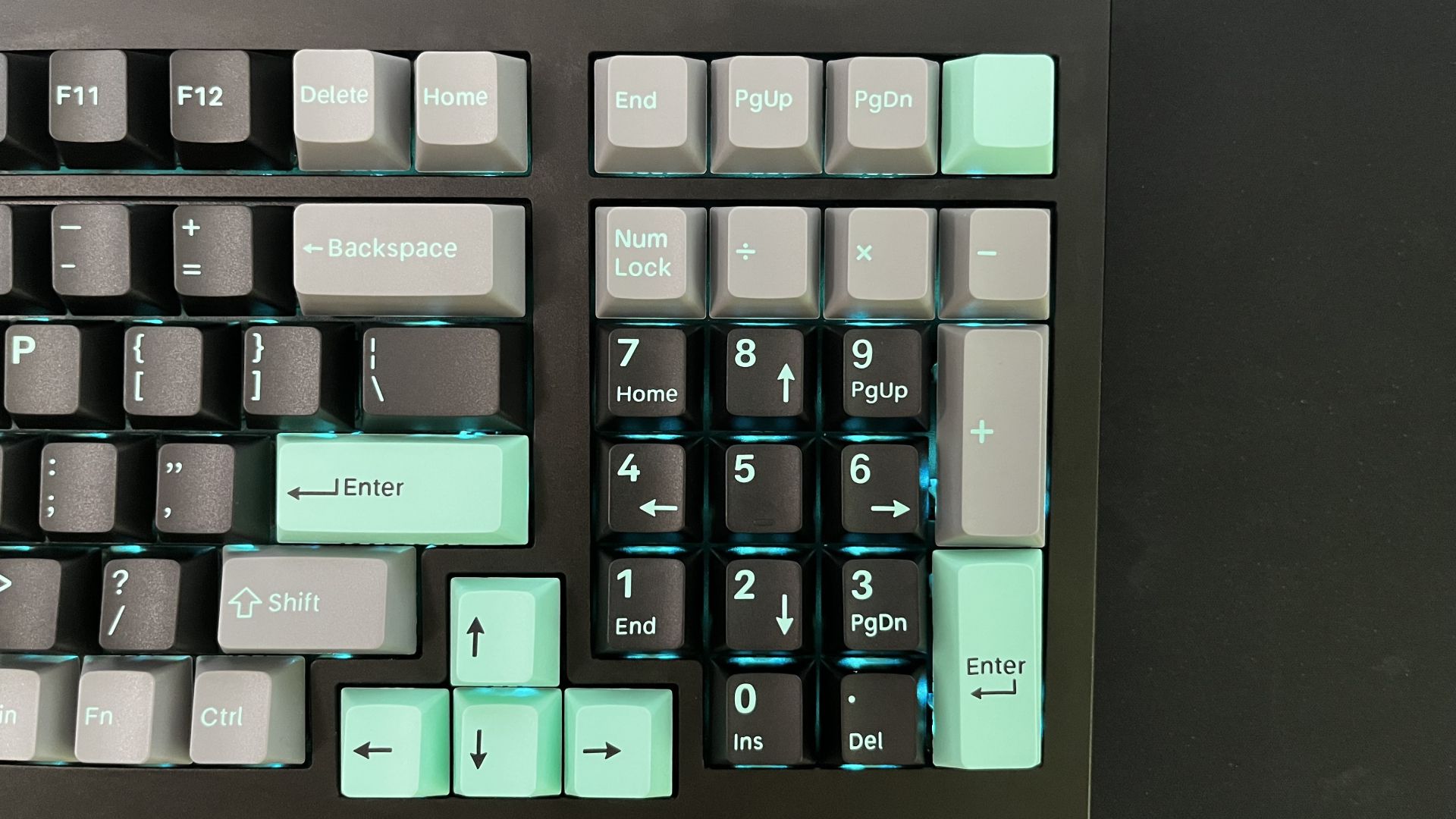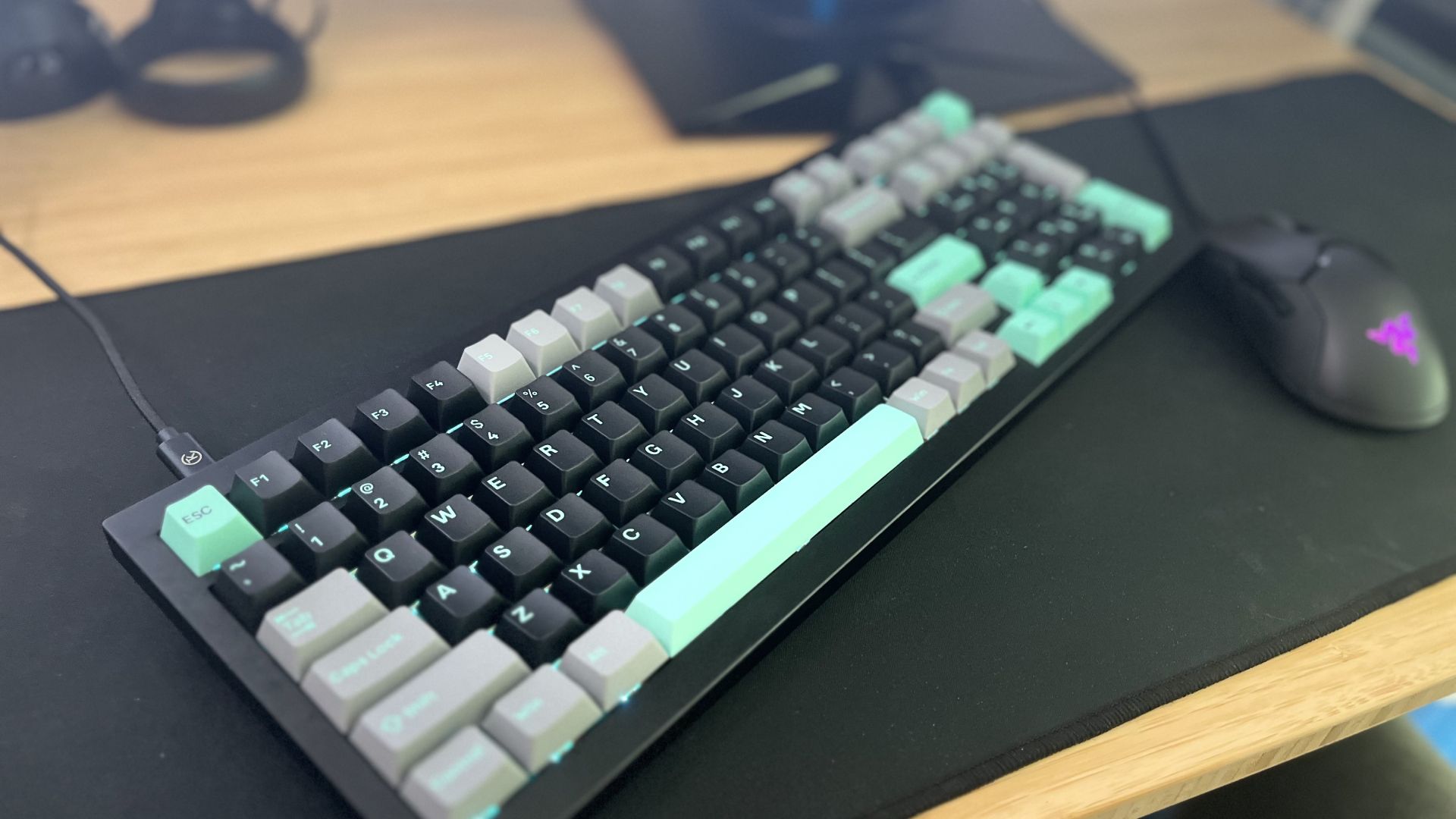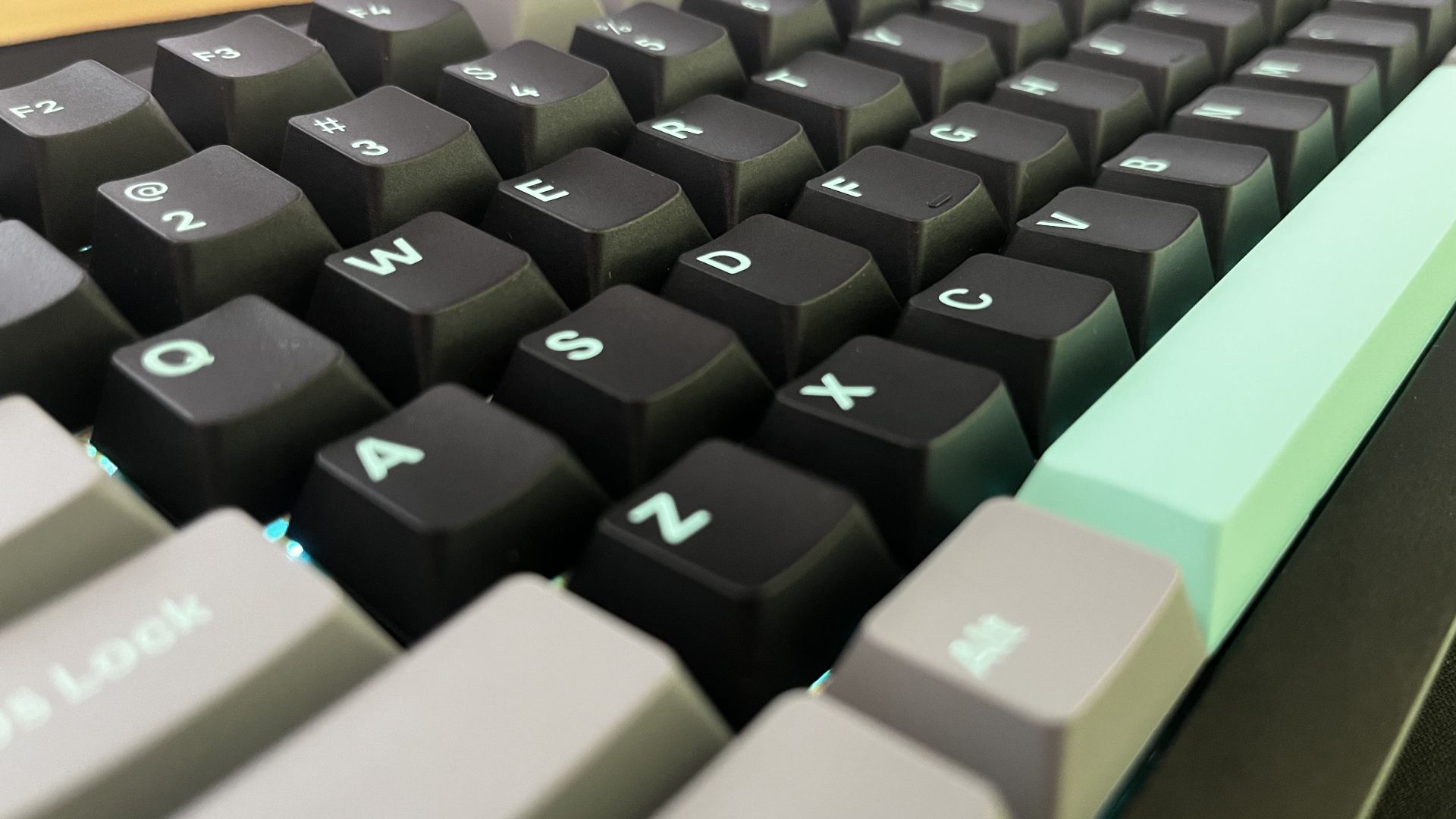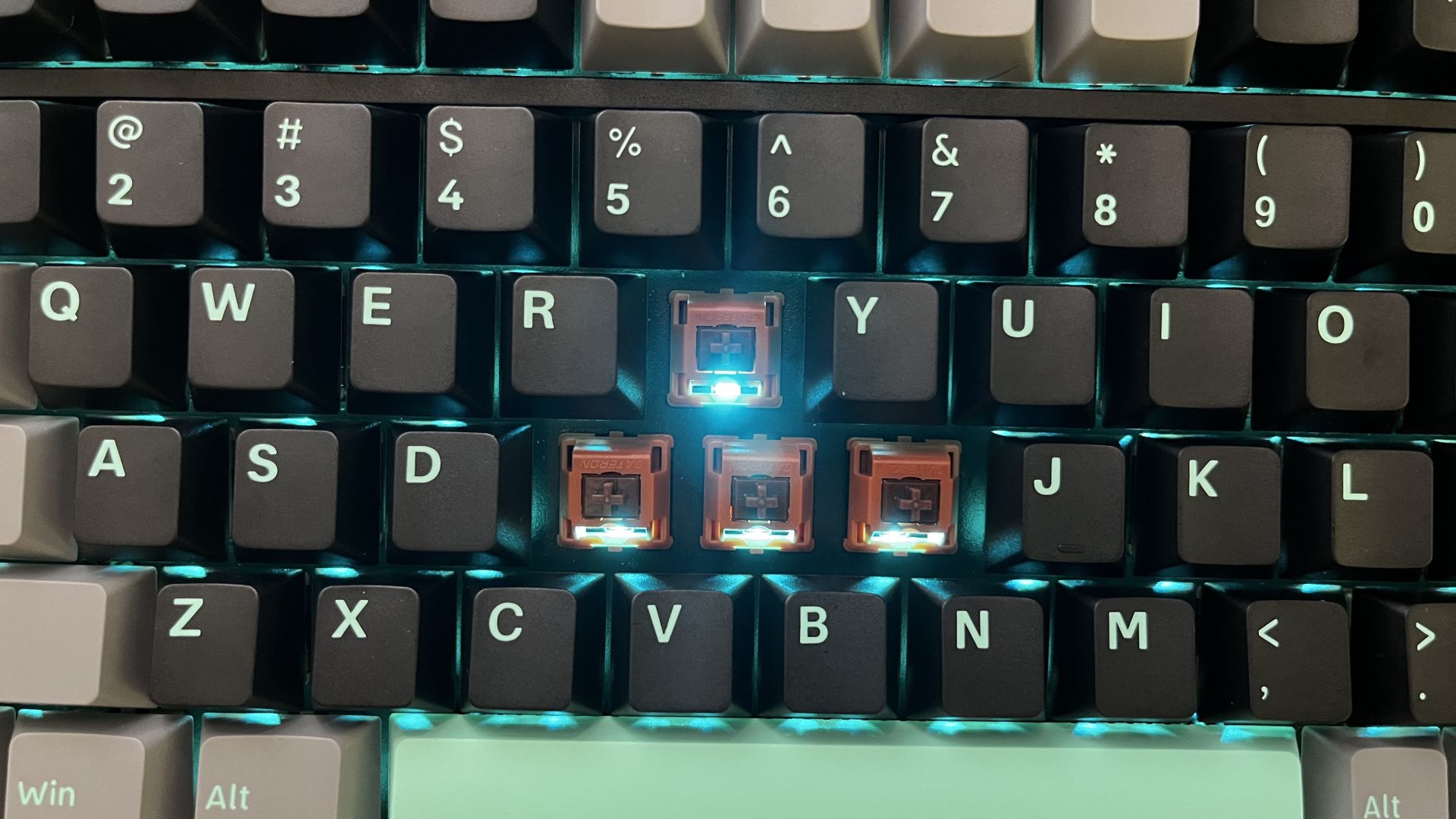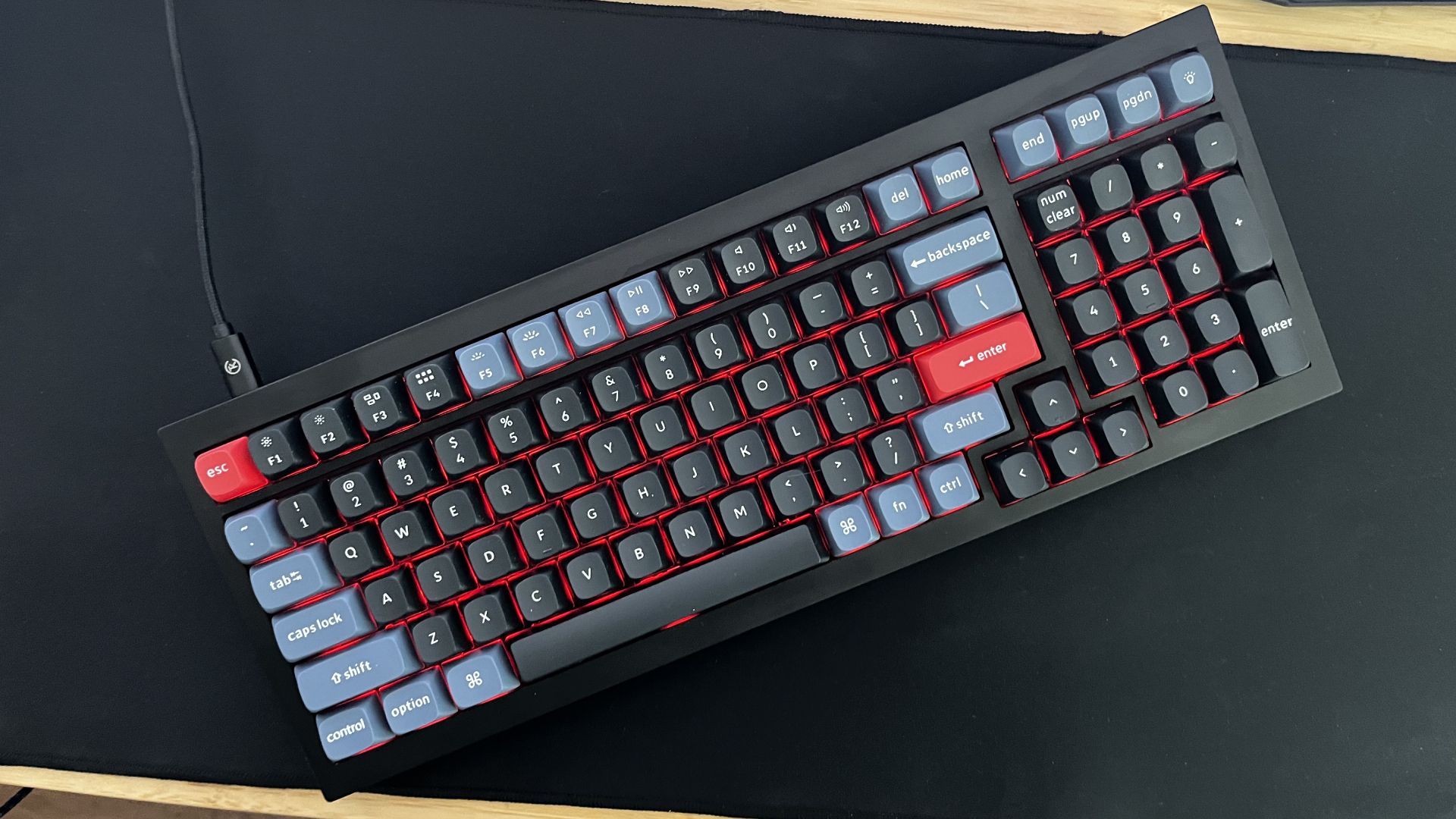Quick Links
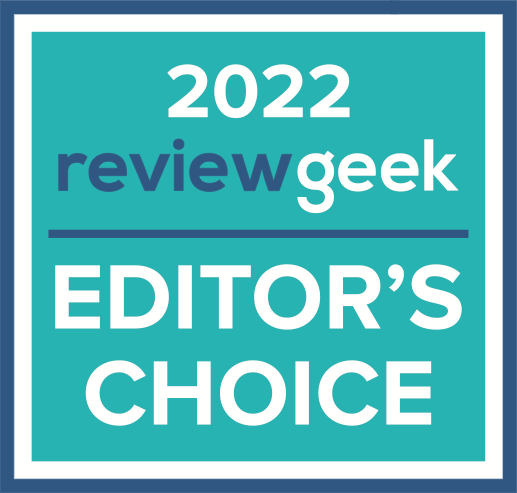
Few names are as synonymous with premium-quality keyboards as Keychron. With their 96% Q5 QMK Mechanical Keyboard comes pre-lubed, hot-swappable keyswitches, smooth double-shot OSA PBT keycaps, a hefty aluminum chassis, and the ability to toggle between Mac and Windows configurations.
If customization is king in your mind, you want a Keychron keyboard. Not only can you swap out keycaps and switches on a moment's notice, but the options available to you in VIA, the customization software Keychron employs for its QMK boards, can create a light show of your own design or set complicated macros to save time.
That said, if you're a set-it-and-forget-it type, you'll be pleased with the Q5 as well. Keychron provides a certain level of out-of-the-box quality that many attempt, but staggeringly few achieve.
Build and Form Factor
- Available frame colors: Carbon Black, Silver Grey, Navy Blue
- Build levels and form factors: Fully assembled (knob and non-knob), Barebone (knob and non-knob, ISO or ANSI)
- Weight: 2.31kg (5.09lbs) ± 10g (Fully Assembled)
- Connection: USB-C, Type-C to Type-A adapter included
As you raise the box to your desk, your arms tell you "this is no ordinary keyboard." At a little over 5lbs (2.3kg), the Q5 QMK is more than twice as heavy as other full-length boards like Das Keyboard's MacTigr and Logitech's MX Mechanical.
You can thank the CNC-milled anodized aluminum case and steel top plate for that. If you're annoyed with a keyboard that slides across the desk when you pound away at the keys, you'll be happy with the Q5; the weight, with the help of four rubber feet on the bottom of the board, means it doesn't move an inch unless you want it to.
There are no angle adjustment feet on the Q5 QMK.
Padding the inner linings of these metal pieces are two layers of sound-absorbing foam and an array of eight gaskets that help cut down on sharp sounds. Some keys do have a slight ping to them (Backspace and Enter are the two I noticed), especially when pressed with gusto, but the foam and double-gasket design is doing its job given the metallic build of the Q5.
You'll be able to hear this keyboard over your headphones regardless of the switch type you choose (discussed in a later section), but as long as you're not expecting a silent typing experience, the noise level is far from annoying.
Around the back of the board, you'll find a USB-C port to connect this wired typing piece to your Mac or Windows PC, as well as a switch that lets you toggle between modes for the two operating systems. Keychron throws in keycaps for each OS as well, so if you need Mac keys like Option and Command, you'll be able to see them on your board and use them in software as needed (the same goes for Windows keys).
Inside the chassis sits a PCB that I've had absolutely no problems with. Every keystroke is registered, I haven't run into any double-typing issues, and the stabilizers stay seated.
At 100 keys (96%), you have access to just about everything from a full 100% keyboard, sans a few lesser-used culprits like PrtScn, Scroll lock, and Insert. Otherwise, it's your standard QWERTY layout in either ANSI or ISO format. The right side of the board holds a numpad, and the top row features 12 function keys alongside the navigation keys (Del, Home, etc.).
Usually, the Q5 has everything I need; on the rare occasion that some functionality is missing, there's bound to be a keyboard shortcut or menu item that can take care of it.
How's the Typing Feel?
I test a lot of keyboards, and ever since I gave the TKL Q3 QMK a go, I compare them all to the typing feel that Keychron boards provide. Harsh keys and sticking switches are non-existent; every keystroke is buttery smooth from top to bottom.
Keycaps, Switches, Stabilizers
- Keycaps: Double-shot OSA PBT
- Available switches: Gateron G Pro Red (linear), Brown (tactile), Blue (clicky)
- Hot-swappable?: Yes
- Stabilizers: Screw-in
Keycaps are an important part of any board, and while I enjoy the stock Double-shot OSA PBT variety, which Keychron describes as "a similar height to the OEM profile [with] an SA-like shape," you can pop on any OEM or Cherry-profile favorites you like. If you want the OSA feel, but you're not big on the default color scheme, Keychron offers a variety of keycap sets to fit your preferences (as you can see, I've swapped the default keycaps with a mint, black, and grey set).
Something I've noticed after a few months of testing: the stock keycaps don't show any oil buildup at all. They never looked unsightly, and a swipe or two from a Clorox wipe kept them as clean and fresh as the day I got them.
The Q5's keycaps are also non-shine-through, which I think makes for a much cleaner look. All of the RGB is south-facing, so it shines toward you onto the board as you type, illuminating the spaces between each key. Colors and patterns are fully customizable in VIA (more on this in the next section), but you can also turn the backlighting off entirely if you find it too distracting.
Onto the keyswitches; you can choose Gateron G Pro Red, Brown, or Blue by default, and if you're willing to pay a little extra, there are more to pick from (like Yellow and Green to name a few). Keychron is one of the few well-known mechanical keyboard manufacturers to load their boards with pre-lubed switches, which is something you don't see on your run-of-the-mill Razer or Logitech options. This has a couple of major benefits, and once you try it out, it's really tough to go back.
Lubed switches are similar to monitor refresh rates in the sense that, if you've never used anything higher than 60Hz, you don't know what you're missing out on. Greasing switches makes the entire keystroke smoother and minimizes the rattling sounds that plastic and metal make when you slam them into a PCB again and again.
However, if you have your own 3- or 5-pin MX mechanical switches to put in, it's as easy as taking the keycaps off and using the included switch puller to make room. Since the Q5 is hot-swappable, you don't have to break out a soldering iron, or even unplug the board first.
If everything else is great, but the stabilizers are poor, it's not a great keyboard---the Q5 QMK is a great keyboard. Screw-in stabilizers are the way to go over plate-mounted if you want a sturdy solution to reliable Space Bar, Enter, and Shift inputs, and that's exactly what the Q5 offers.
But, as with just about anything else on this keyboard, if you don't like the stabilizers, take them out and put new ones in. A few turns of a screwdriver and you're good to go.
Customization: Rough Setup, Then Smooth Sailing
The customization software setup process is one of the few things holding Keychron QMK boards back, and the Q5 is no exception. It's a little more involved than your typical plug-and-play keyboard. First, you'll need to install VIA, the customization app. Then, download a JSON keymap that matches your board's form factor. Now, in VIA, you'll need to enable the "Show Design tab" option in Settings and import the previously-downloaded JSON file.
If VIA is having trouble recognizing your Q5, you may need to update it to the latest firmware version.
At this point, you're ready to customize as you please. Change the lighting preset, remap keys to control volume or adjust RGB intensity at a moment's notice, set time-saving macros---just about anything you may need from your mechanical keyboard. Something to note, every time you close and re-open VIA, you'll need to import the JSON file again before you can begin customizing.
As long as you understand going in that setup will be a bit of a chore, it isn't that bothersome. However, if you're expecting to plug the keyboard in and have customization at your fingertips, you won't have your expectations met.
Should You Buy the Keychron Q5 QMK Mechanical Keyboard?
I can't recommend Keychron keyboards enough. I've adopted the Q5 QMK as my daily driver, and it replaced the Q3 QMK I used beforehand. As far as the Q5 specifically, you should be in the market for a 96% keyboard that's best suited for everyday stationary use (traveling with a 5-pound block of metal in your carry-on isn't fun, I've tried).
You should also be looking to spend around $200 to $250. Keyboard prices continue to climb, and if you don't want to spend a few hundred dollars every time yours wears out, you need something built to last that you can tune up as needed. Keychron certainly fits the bill; I've never once worried about the durability of the Q3 or Q5, and if I feel like using different switches for a while, I can just swap them out for around $40 instead of shelling out 5 times as much for a whole new board.
If wireless connectivity is a requirement for you, the Q5 isn't a good fit. Keychron has a number of Bluetooth-enabled keyboards like the K8 Pro that you may want to check out instead.
But, for a fully-customizable, premium-quality mechanical keyboard with velvety keystrokes, I highly recommend Keychron's Q5 QMK.
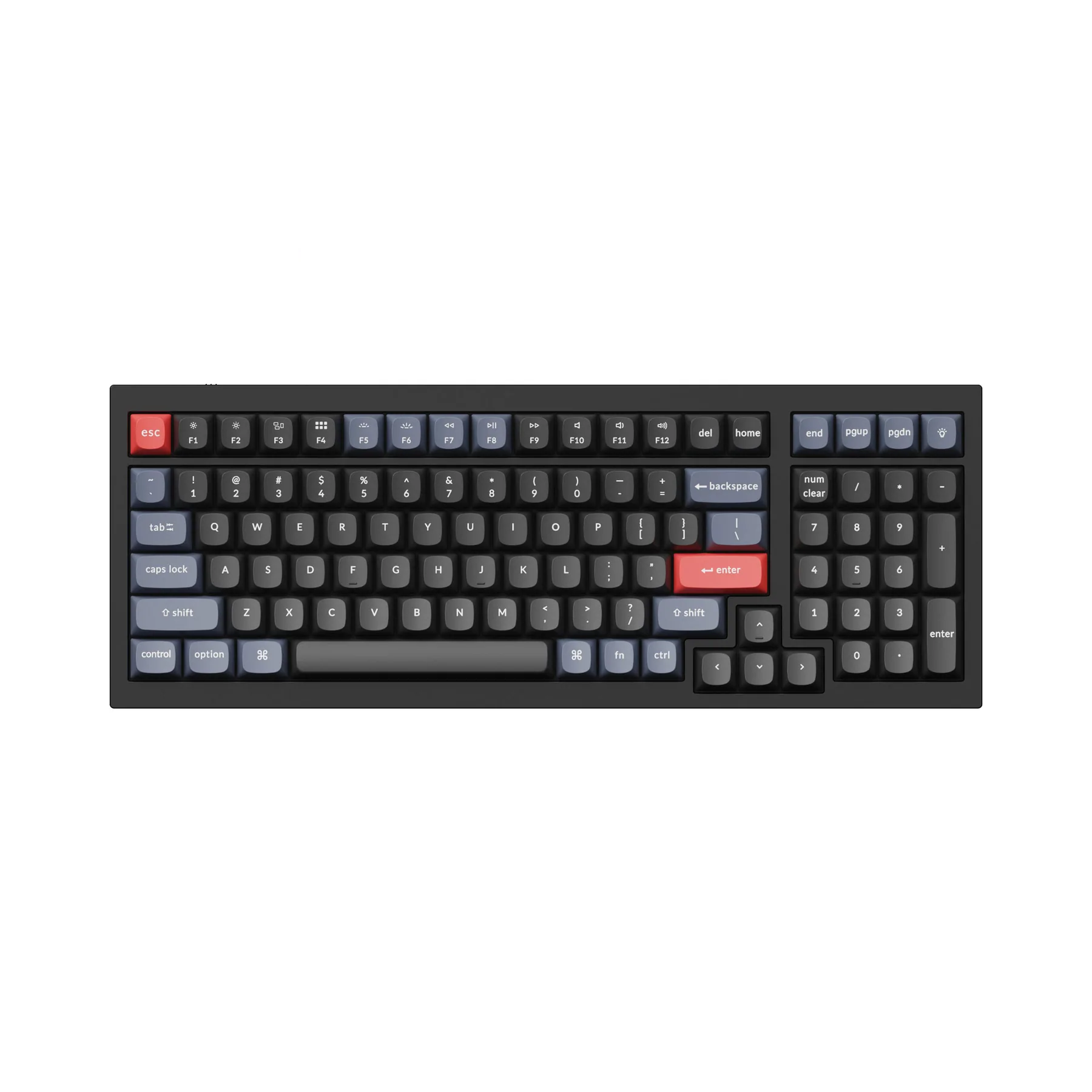
Keychron Q5 QMK
- Excellent typing feel
- Durable chassis
- Fully customizable, hot-swappable
- Design aesthetics
- Can be expensive
- Customization software setup

